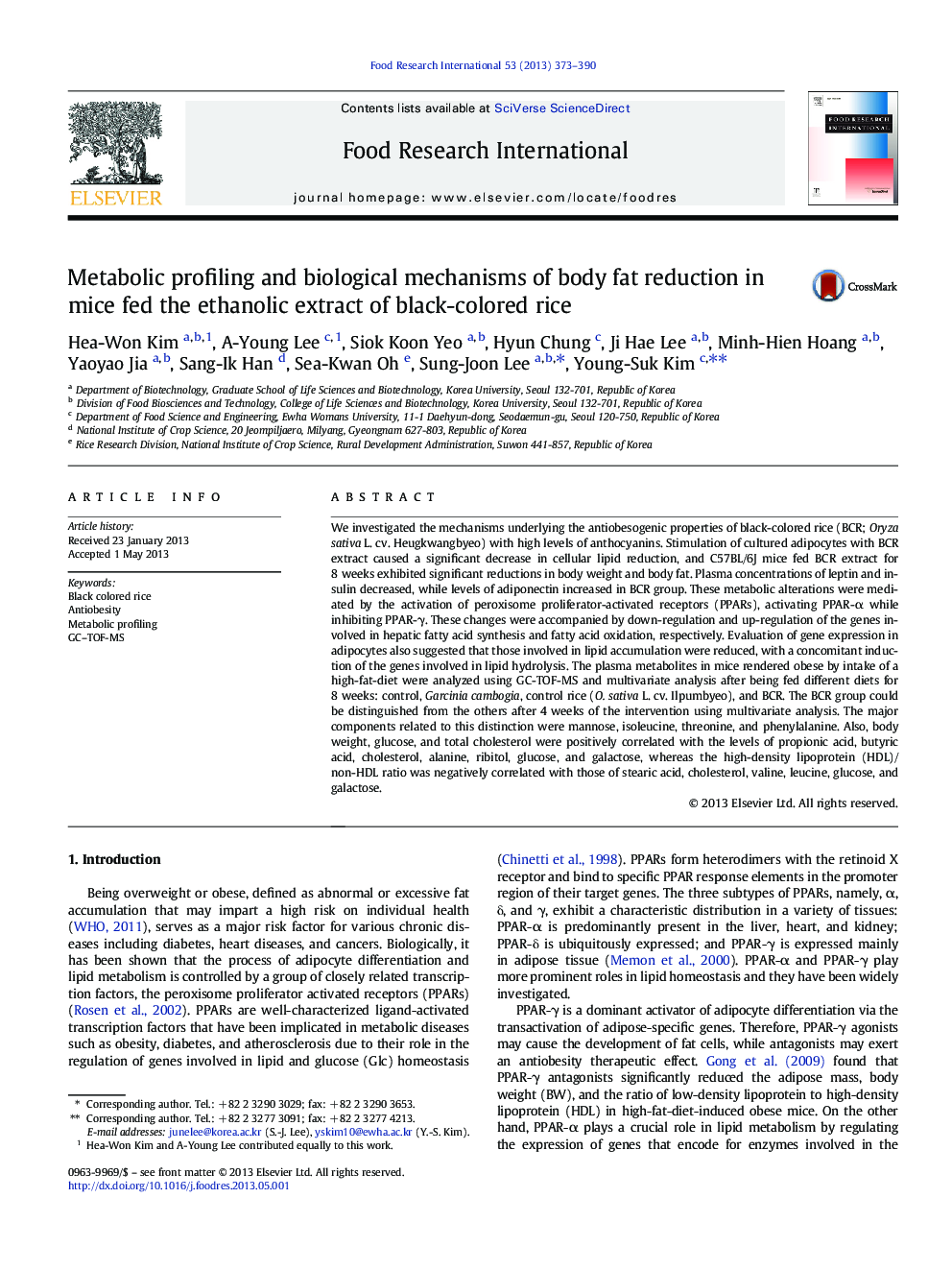| Article ID | Journal | Published Year | Pages | File Type |
|---|---|---|---|---|
| 6397769 | Food Research International | 2013 | 18 Pages |
â¢Mechanisms on the antiobesogenic properties of black-colored rice were examined.â¢Plasma metabolite profiling from obese mice using GC-TOF-MS was investigated.â¢The metabolites correlating to obesity was then analyzed.â¢The results provide information of black-colored rice on metabolite alterations.
We investigated the mechanisms underlying the antiobesogenic properties of black-colored rice (BCR; Oryza sativa L. cv. Heugkwangbyeo) with high levels of anthocyanins. Stimulation of cultured adipocytes with BCR extract caused a significant decrease in cellular lipid reduction, and C57BL/6J mice fed BCR extract for 8 weeks exhibited significant reductions in body weight and body fat. Plasma concentrations of leptin and insulin decreased, while levels of adiponectin increased in BCR group. These metabolic alterations were mediated by the activation of peroxisome proliferator-activated receptors (PPARs), activating PPAR-α while inhibiting PPAR-γ. These changes were accompanied by down-regulation and up-regulation of the genes involved in hepatic fatty acid synthesis and fatty acid oxidation, respectively. Evaluation of gene expression in adipocytes also suggested that those involved in lipid accumulation were reduced, with a concomitant induction of the genes involved in lipid hydrolysis. The plasma metabolites in mice rendered obese by intake of a high-fat-diet were analyzed using GC-TOF-MS and multivariate analysis after being fed different diets for 8 weeks: control, Garcinia cambogia, control rice (O. sativa L. cv. Ilpumbyeo), and BCR. The BCR group could be distinguished from the others after 4 weeks of the intervention using multivariate analysis. The major components related to this distinction were mannose, isoleucine, threonine, and phenylalanine. Also, body weight, glucose, and total cholesterol were positively correlated with the levels of propionic acid, butyric acid, cholesterol, alanine, ribitol, glucose, and galactose, whereas the high-density lipoprotein (HDL)/non-HDL ratio was negatively correlated with those of stearic acid, cholesterol, valine, leucine, glucose, and galactose.
